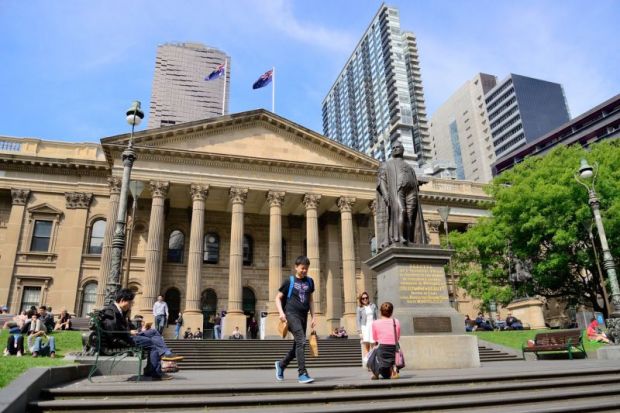Lockdowns and border closures delivered a net financial saving for universities in Australia’s second biggest state, with reductions in travel and “staff-related” costs trumping the decline in tuition fees from stranded international students.
Victoria’s eight public universities last year saved a combined A$228 million (£124 million) thanks to international travel restrictions and lockdowns imposed by the state government, according to a report from the Victorian Auditor-General’s Office (VAGO).
This exceeded the A$178 million they lost from international students who could not enter Australia because of Covid-related border closures introduced from February 2020.
While earnings from overseas students declined from their 2019 peak, they remained substantially higher than in 2018 and constituted 34 per cent of Victorian public universities’ overall income.
The report summarises VAGO’s audit of the accounts of the state’s eight public universities and their 41 controlled entities. Like a similar report released six days earlier in New South Wales, it found that the slump in earnings from international students was a relatively minor contributor to the sector’s financial woes.
Those woes are likely to escalate as the pandemic discourages new foreign enrolments. To date, the losses have been alleviated because thousands of current students have maintained their studies remotely, but this income source is expected to vanish as the students graduate.
Victorian universities also struggled with the pandemic’s impacts because they had expected the boom in international student earnings, which had increased by 15 per cent to more than A$3.5 billion in 2019, to continue.
Nevertheless, the A$396 million reduction in investment income last year more than doubled the decline in income from foreign students. Universities also forfeited A$116 million in student fees for things such as accommodation, parking and use of facilities.
Even these losses were cancelled out by A$84 million in savings on contracted and professional services, and A$40 million in reduced spending on international agents and partnerships.
On the other side of the ledger, the state’s universities spent A$65 million to support students during the pandemic.
Overall, the eight universities’ revenue exceeded their expenses by A$317 million – less than one-third of the previous year’s buffer. While all eight universities recorded surpluses in 2019, three notched deficits in 2020.
Despite the turmoil, the universities improved the quality of their financial reporting. VAGO found just five “financial errors” in the institutions’ accounts, down from 25 the previous year. The combined A$21 million value of these errors was “not material”, the report says.




